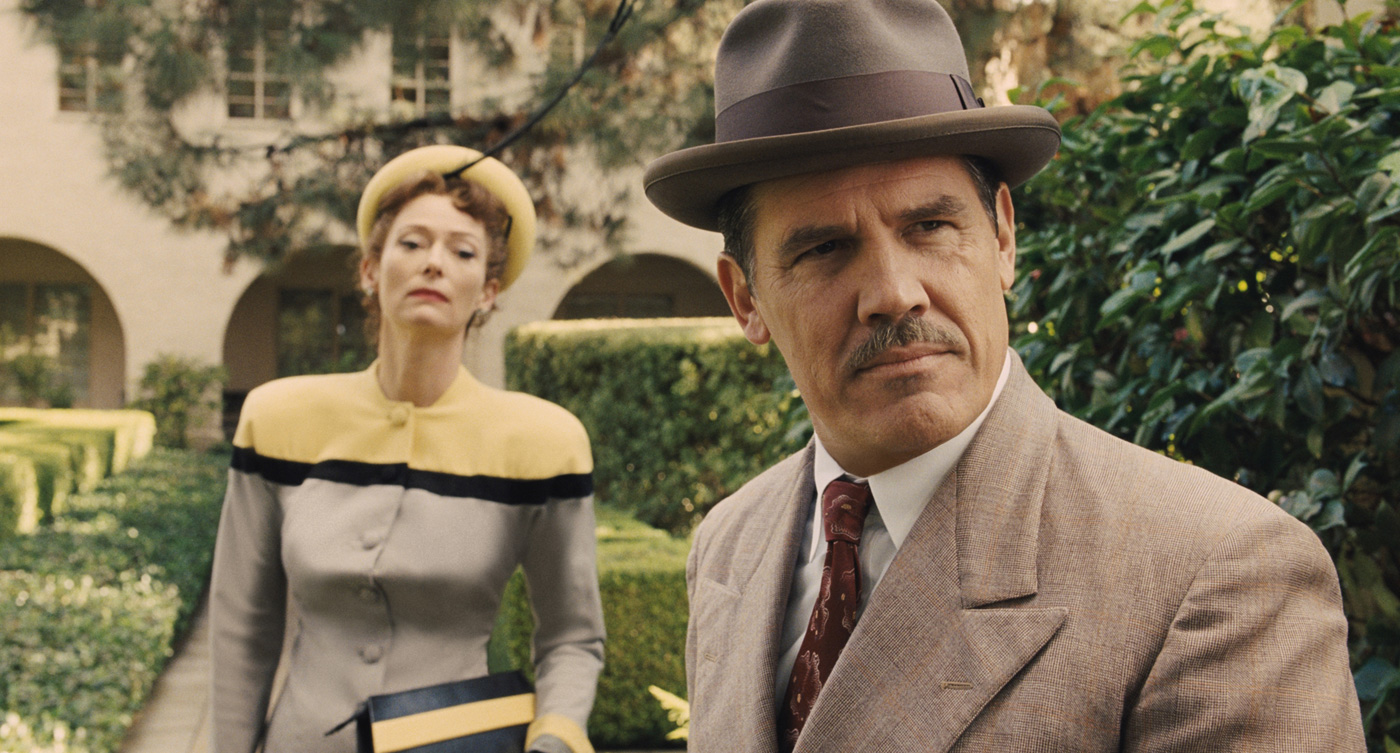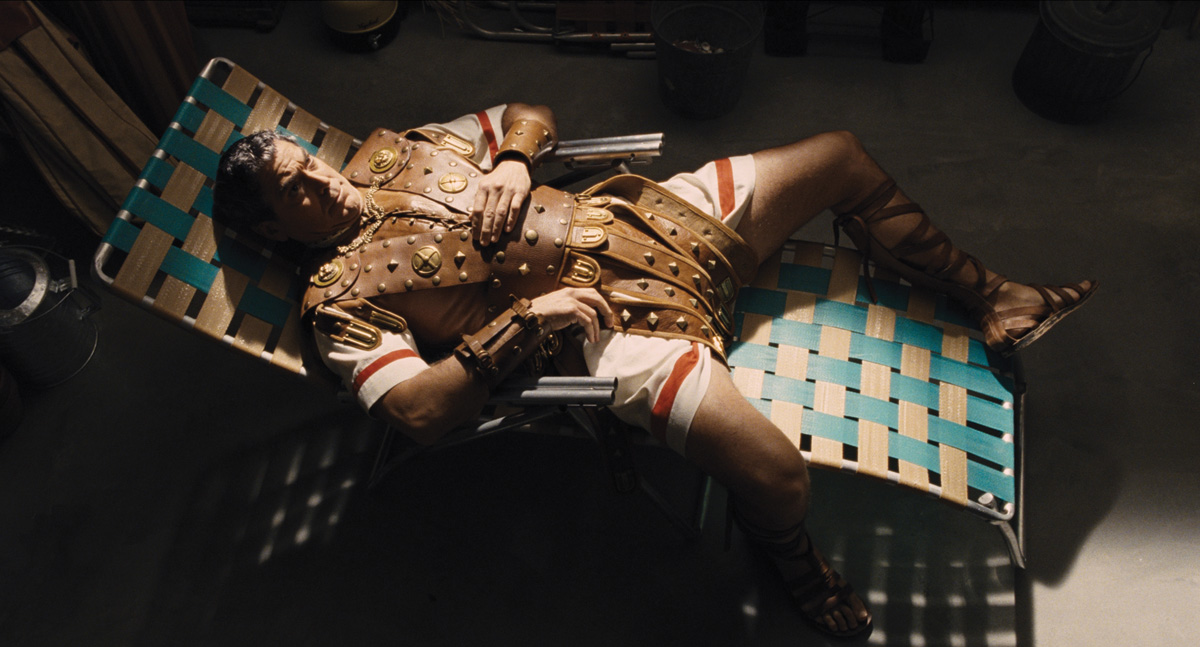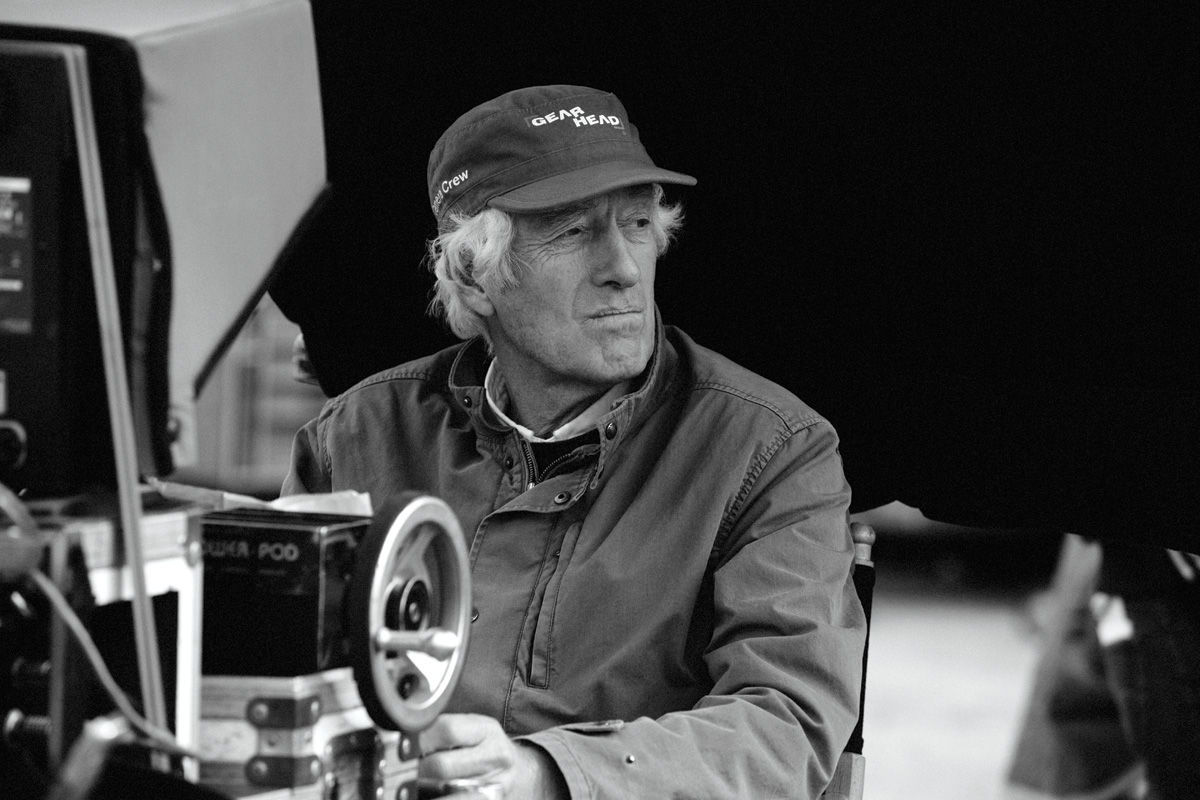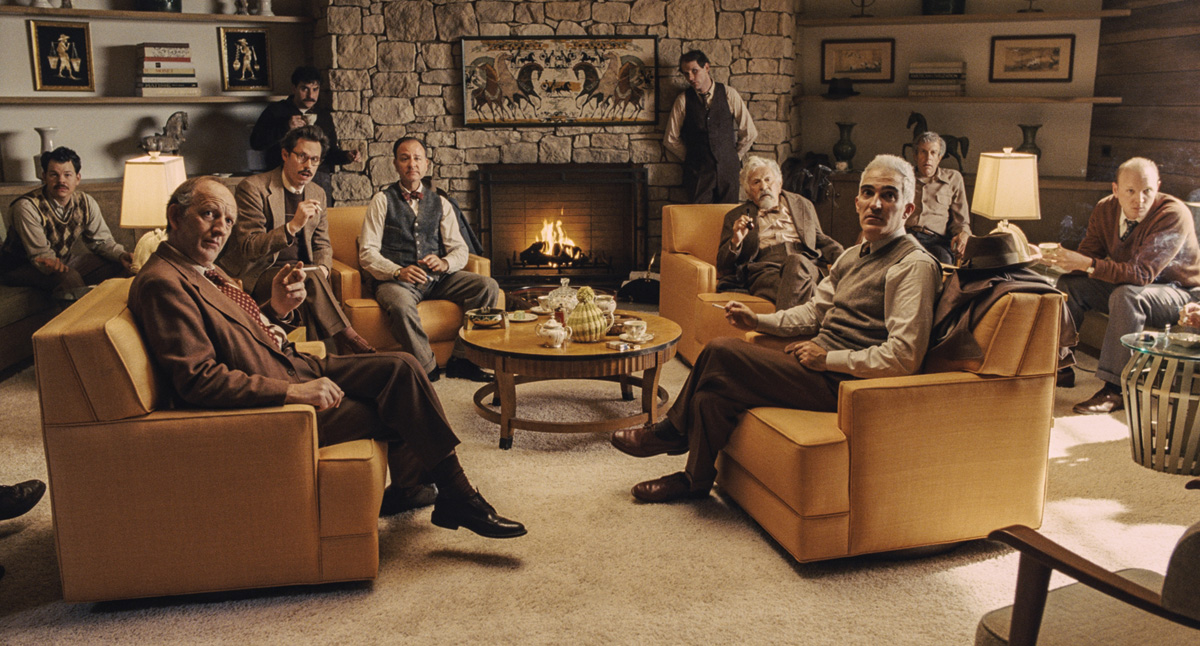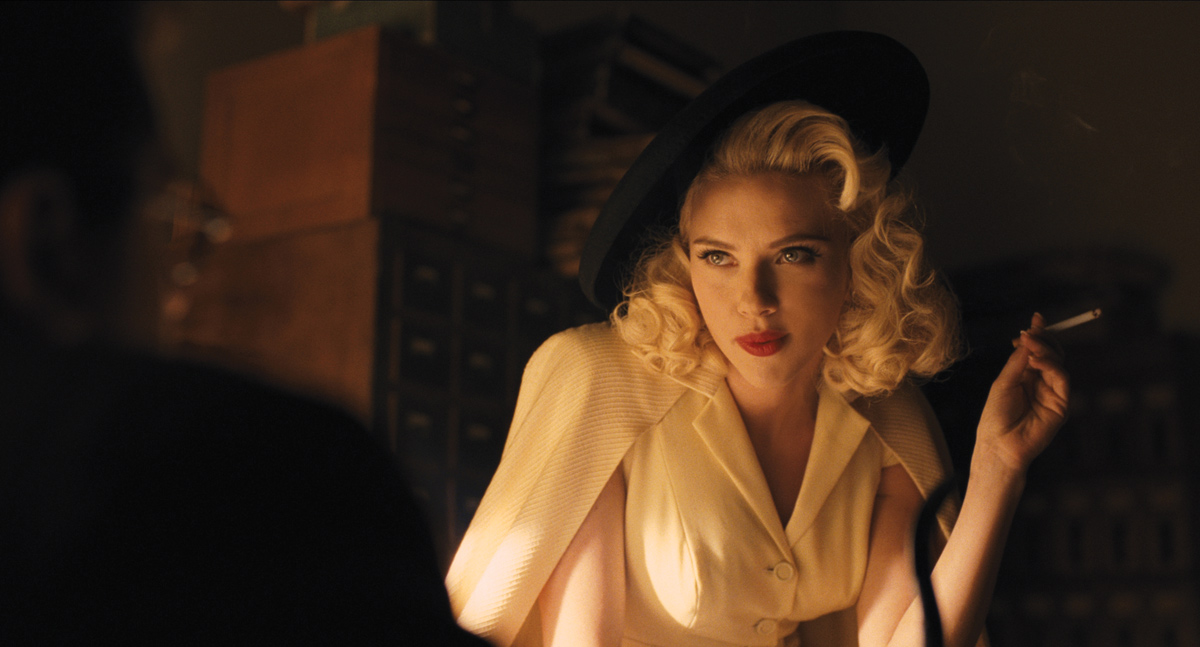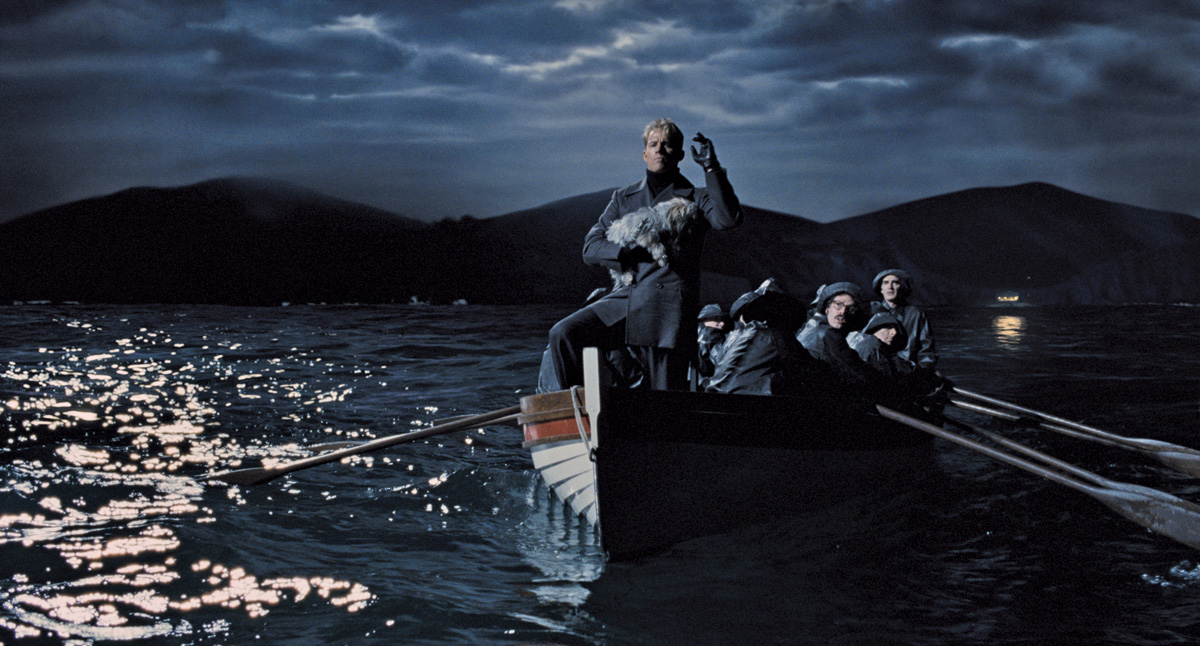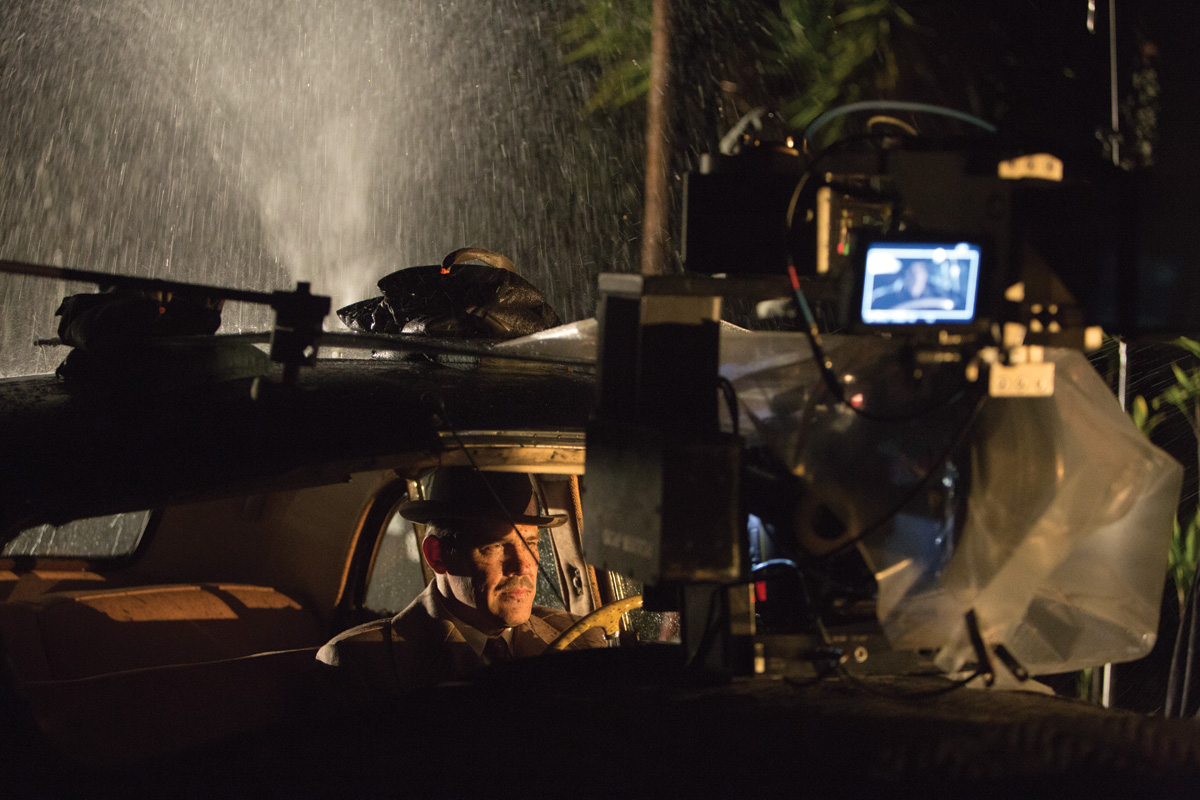Roger Deakins, ASC, BSC, helps the Coen brothers gate-crash a 1950’s-era Hollywood movie factory for Hail, Caesar!
With careers dating back three decades (to Blood Simple), Joel and Ethan Coen boast an acclaimed filmography that ranges from farce to fantasy – often in the same story. Their latest, Universal’s Hail, Caesar!, recaptures Hollywood circa 1952 as it depicts the life (and utterly fictionalized times) of studio “fixer” Eddie Mannix (Josh Brolin), whose deft hand is required to squash scandals without offending gossip queens. At the core of Eddie’s dilemma is the kidnapping (a frequent narrative device for the Coens) of Capital Pictures star Baird Whitlock (George Clooney), while Whitlock is filming a biblical epic stylistically evocative of Quo Vadis and The Robe.
To render cinematic success unto Caesar!, the brothers turned to many of their frequent creative partners, including Roger Deakins, ASC, BSC, here shooting his twelfth film for the Coens.
“It was a quite complicated story,” Deakins observes, “one they have been toying with in script form off and on for fifteen years.” The film’s unusual balancing act teeters between everyday reality and the stylized look of the many films glimpsed in production at the studio. “Within the ‘real’ part of the film there are moments verging on film noir, and other points that feel distinctly Hitchcockian,” Deakins shares. “Reality starts looking like a movie – or, at the very least, it displays aspects of artificiality.”
Settling on distinctive looks for the various films being shot on the lot – movies within the movie – required hours of planning between Deakins and other members of the Coen brain trust, which included production designer Jess Gonchor and costume designer Mary Zophres, who first worked for the Coens as a P.A. on Barton Fink.
Zophres, who did a month of research even before the film was greenlit, says the Coens’ imaginative scripts always help her to “spur creative interpretation.” By the time preproduction officially started, she had worked up an entire palette for the show.
“The Coens liked my idea that reality was going to be desaturated, in mainly earth tones,” the designer recalls. “These same colors would also be seen in the movies within the movie, but the hues would be altered to garish Technicolor intensities – an idea that Jess also came up with independently. The costumes in those movies would look like costumes rather than clothing, which also differentiated them from the Eddie Mannix reality aspect, as a matter of both palette and patina.”
Gonchor describes 1950’s-era MGM as a huge machine, releasing movies nearly every week of the year. “Within this factory, anything was possible,” he declares. “If you needed a giant tree, unless it was found within twenty miles, you’d just build it, using in-house sculpture and plaster departments. Fortunately there are still a lot of talented people who remember how to do things like oversized set pieces, which were needed for the Biblical film-within-a-film.”
The production designer was allowed to review old MGM archive imagery, including rare views of the fabled Thalberg Building. “We established a geography for the studio lot, then made up a map for the wall of his office showing which stage each of these movies was shooting,” Gonchor continues. “Figuring out the studio layout helped us in another way: 85 percent of this show was going to be in-camera, but there were still things that had to happen through VFX [realized by Psyop Film and Television], though they were usually limited to background aspects.”
Deakins recalls the initial thought that each genre piece strongly conform to the look of such films in that era. “We were going to make a much bigger stylistic deal of things,” he acknowledges. “But as we got into it, we realized there might be too much of a jump when shifting from the real-world story to the shooting of these films. We kept the separate looks, but they are not so apart that it keeps us from making the whole thing look like one single movie.”
The logistics of recreating period filmmaking were sometimes daunting.
“When we lit the sets of the films within films – like the crucifixion for instance – you come out far enough to see the lighting rigs outside the set,” Deakins explains, “so I did have to conform with the kinds of units then in use. That often meant using hard light, even in instances when I would normally have chosen a softer source. Still, it was fun to use those very traditional lighting techniques again, in this unique context.”
Gaffer Chris Napolitano was amazed to find so many still-functioning period lights. “Universal had a lot, and [the lights] were mostly in great shape,” he states. “After the set decorators got involved, we wound up with lights that functioned both as period props and as practical illumination sources.” Even a few ancient carbon arc lamps were reconditioned for use on the film’s western location (shot at iconic Bronson Canyon), though Deakins doubts they’ll appear in the final cut. Napolitano, who used a modern version of spun glass over the period units (much like the image-softening tools employed during that period), says finding carbons to operate the arcs was challenging.
Either way, the DP and gaffer worked up extensive lighting diagrams for each set.
“Chris would add a few extra lights anytime he thought I might be skimping a bit,” Deakins laughs. “I needed a fair amount of depth of field; back then they’d shoot to a stop between 4 and 5.6 because that was the sweet spot on lenses, but that was while having to use much slower film emulsions.”
Zophres recalls the excitement of being able to tap venerable in-town resources.
“In shooting a movie about Hollywood in Hollywood,” she describes, “we were able to use vendors that haven’t been fully utilized as well as they would be if more shows stayed local. But we still had to beg, borrow and make a lot of deals. Joel explained how their autonomy is based on never going back to the studio for more money, even when they know there isn’t enough to do the film! Fortunately, the Coens know when an element isn’t going to feature in a close-up, so we can put money into the hero pieces.”
The designer cites an example of this clear-minded efficiency. “We chose to have the Roman armor manufactured locally and found a source,” she continues. “But the price would be prohibitive if we needed custom molds for each soldier. Since there was really just George in the foreground, we had them make duplicates of that single casting, saving thousands. With that solution in mind, we also made the tunics one size fits all.”
A bathing-beauty sequence drew from Esther Williams and Busby Berkeley, while the western derived its look more from period television – with good guys in white and bad guys in dark costumes. “It was much more on-the-nose, a glossy look that was miles away from True Grit,” says Zophres, who referenced famed fashion designer Charles James’ ball gowns for the parlor drama directed by Ralph Fiennes’ character. “James would be rolling in his grave to see the actual construction used on these dresses, but they looked fine on the outside for the camera.”
Anchors Aweigh and On the Town were visual inspirations in creating the dance numbers featuring Channing Tatum, for which Zophres had to find fabric that both looked right on the dancers and worked for the camera. “Mary mentioned that really white costumes were desirable, but that we should probably take them down a bit after testing,” Deakins shares. “In other circumstances I’d have agreed, but on this show, delivering a unique look for each segment was essential, so I told her to just leave them bright white.”
Deakins shot on Kodak Vision3 emulsions, using the 50D, 200T and 500T stocks, while Fotokem handled developing, and EFILM colorist Matt Wallach addressed dailies timing. “I liked the grain and texture of the film image for this particular show,” Deakins continues. “As Ethan said, this is a film about film, so it made sense for the Coens that we went this route, even though initially I felt the Alexa might be the better choice. Since digital took over the major part of the market, there seems to be a little less back-up market for shooting film, which can create some problems.”
First AC Andrew Harris reports that digging up some of the equipment to shoot film wasn’t as easy as in past years. “Some of this stuff had gotten pushed pretty far back on the shelf,” he acknowledges. “But it was nice to be shooting back in L.A. again, since the infrastructure everyone is running from is still a strong one. Roger got his favorite camera back to shoot this one. [Otto Nemenz] had tried to give it to him a few years back, but he thought that was jumping the gun, and I guess this proves he was right.”
Deakins has relied on the ARRI 535-B since the camera debuted. “I like this camera better than the newer Arriflex,” he says, “but recently they had been considering having it shipped to the ASC camera museum. Seriously!” Sticking with his traditional tools, which include spherical Zeiss master primes for the Super 35 shoot, Deakins, as is typical, handled a number of the camera moves with an Aerocrane Jib Arm or a Giraffe Crane combined with a remote power pod head. Otherwise the only specialized equipment was an Edge Arm scheduled for a single evening to capture driving shots on the PCH.
B-camera operator Bela Trutz occasionally supplemented with an Arricam LT, which was actually a key part of the planned coverage. “When Roger uses a second camera, the shot is essential and usually it makes the cut,” Trutz reports. “Some camera crews are starting to forget the routines of the film camera workflow, but not Roger’s crew. Getting used to the optical viewfinder again is one of the things you have to deal with; as a Steadicam operator, support equipment is very different between the two media.”
Locations throughout Los Angeles were employed. As Gonchor describes: “Except for Warner, none of the studios look the way they did back then.” He found the iconic architecture of Downtown’s Union Station “ideal for shooting the drive-in and walk-in gates” to the fictional studio, as did Deakins.
Union Station night work was done with Tungsten sources while day exteriors were supplemented using HMI lights and large muslin bounce reflectors. Napolitano relied on Warner and Sony lights while shooting on those stages. He amplified those with his own specialty units (many of which were custom built for Deakins’ specifications on past projects) for the film’s main “Lot Studios,” where a Malibu home was recreated.
For the water musical film-within-a-film, a Hydroflex rig captured underwater shots on Sony’s Stage 30 (the same stage where MGM’s Esther Williams splashed around), in a 15-foot-deep tank that spanned 90 feet by 90 feet with a 45-foot ceiling. Napolitano, who began his career at Paramount in the 1980s when green beds were still hung from perms, says lighting the huge water set was as much instinct as anything else.
“You can’t always rely on math to figure the lighting intensities and ratios,” he describes. “The pool bottom is a good example, because it wasn’t lit down there, so to achieve penetration I upped our lights overhead, from 90 10Ks to 120.”
To shoot a wacky bit involving an actor defecting to the Soviet Union, the Sony water tank was also used for a full-scale section of a Russian submarine and rowboat. “We put the rowboat on a gimbal for some wider shots against blue screen,” Deakins recounts, “and used front-lit painted scenic backings for most of the action. Every lamp was direct and without diffusion to mimic the hard lighting used for a scene like this at that period in time; Chris Napolitano added two 5Ks outside of two 10Ks in order to create a wider spread of light to each individual source. This added light ‘wrap’ and shape to the dark hull of the submarine and a more forgiving light to the faces of the actors.”
Scenic backings figured elsewhere as well, including one actually made for the 1959 Ben-Hur, while the others were executed by J.C. Backings, which resides on the Sony lot. “They give a slightly less realistic, flatter look,” acknowledges Gonchor. “There’s some believability, but it is clearly not of photographic quality image-wise.”
Napolitano lit the painted backings with 5Ks and curtains for the “swimming” scene with a 6-light cyc light. “The art department hung sheers,” he notes, “but getting both front-lit and rear-lit backings to read well was tricky, so we’d often work on these during our pre-light days and avoid any nightmare delays during shooting. Our pre-lighting on these big stages meant Joel and Ethan – who are probably the most efficient filmmakers I’ve ever worked with – have more time with the actors. We don’t spend four or five hours lighting any stage during regular shooting time – it’s usually more like an hour.”
After the Coens finished their cut [using Adobe’s Premiere Pro CC], Deakins relied on EFILM supervising digital colorist Mitch Paulson for his DI. “I like to get as close as I can with the negative,” Deakins reveals, “and try to limit corrections, though sometimes one can use windows or tweak the contrast just a bit in the DI. I find the most complicated thing can be the timing of effects shots so that everything fits together.”
Paulson, who employs Autodesk Lustre as his main toolset for its flexibility, recalls enhancing the look of headlights on some day-for-night driving scenes, but notes that “this show was mainly about tweaking the looks for the movies within the movie. Roger comes in knowing exactly what he wants, and I play around with ways to fine-tune to get things that last part of the way. He is the only client who is always there from day one, starting with dailies grades and going through the whole film every day alongside me. He genuinely enjoys seeing what we can accomplish during the DI process.”
Deakins, who is currently prepping a Blade Runner sequel for Denis Villeneuve, says the Coens’ enormous amount of preplanning sets them apart from the “fix it in post” mentality. “They storyboard very specifically and don’t often deviate from the concept,” the DP reveals, “so there’s never a fear of being caught out, like when another director might reconsider on the day. We achieve tremendous visual benefits as a result of this thoroughness.”
He offers a dialog scene from Caesar! set on the streets of L.A. as an example.
“We did one angle shooting in the evening toward North Hollywood, with the reverse handled a week later, miles away and during early morning,” Deakins concludes. “That odd mix of times and angles was the best way for us to get the low sunlight feel of late evening, with the right light and colors in-camera. I consider this kind of thinking as the real ‘movie magic,’ as opposed to just visual effects. You can only get away with stuff like this when the process is very structured and built into the schedule, and it happens to be a tremendously fun and wonderful way to work.”
by Kevin H. Martin / photos courtesy of NBC UNIVERSAL

